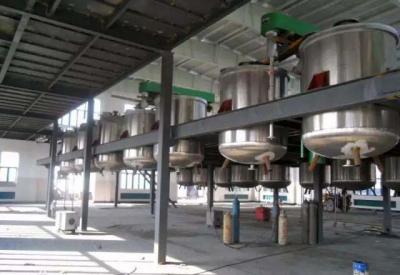Silicone softening agents, due to their unique structure of polymethylsiloxane, have good thermal stability, excellent smoothness, low surface tension, no irritation to the skin, and impart excellent smoothness and softness to the treated fabrics. The synthesis process is basically non-toxic, environmentally friendly, and cost-effective. It has been widely used in the finishing processing of various textiles such as cotton, silk, wool, and polyester, and has become a widely used, good performing, and most prominent type of softener in the textile industry.
Modified silicone softening agent
Modified silicone fabric softener utilizes active group to give textiles different finishing styles, which can meet different requirements of fabrics in terms of softness, smoothness, resilience, and hydrophilicity.
Organosilicone polyether modification can greatly enhance the hygroscopicity of treated fabrics and exhibit good hydrophilicity, but poor washability and softness. Organosilicon amino modification can significantly improve the softness, smoothness, and resilience of treated fabrics, but the hydrophobicity will further increase. Organosilicon epoxy modification can endow the treated fabrics with durable smoothness, softness, resilience, fullness, and significantly improve the wrinkle resistance of fabrics, but lower the hygroscopicity.
In order to simultaneously achieve excellent softness and hydrophilicity, the development trend is toward dual-functional modified polysiloxane, among which the most prominent ones are polyether-epoxy modified polysiloxane and polyether-amino modified polysiloxane. The former is relatively mature with industrialized research results and corresponding products on the market, but the hydrophilicity of the treated fabrics is relatively lower than that of organosilicon treated fabrics, while the softness decreases significantly.
Amino can make the silicone fabric softener more directed to adsorb on the fabric, so that the treated fabrics show a smooth and ultra-soft finishing effect. Therefore, polyether-amino modified polysiloxane has become the hope to overcome the contradiction between hydrophilicity and softness.
Study on the mechanism of action of silicone softening agent
Traditionally, the mechanism of action of softeners is thought to be that the friction coefficient of fibers or fabrics decreases after softener treatment, thereby reducing the frictional resistance between fibers, between fibers and the human body, and particularly lowering the static friction coefficient to give the fabrics a good soft feel.
When touching fiber products with a small friction coefficient, just a little force can cause sliding deformation between fibers, giving a soft feeling. The friction coefficient on the surface of the fiber fabric is directly related to the molecular structure of the softener and its film-forming, oriented arrangement on the fiber surface.



 English
English  日本語
日本語  Español
Español  tiếng việt
tiếng việt  Türkçe
Türkçe  ไทย
ไทย  українська
українська  हिंदी
हिंदी  বাঙালি
বাঙালি  اردو
اردو 



